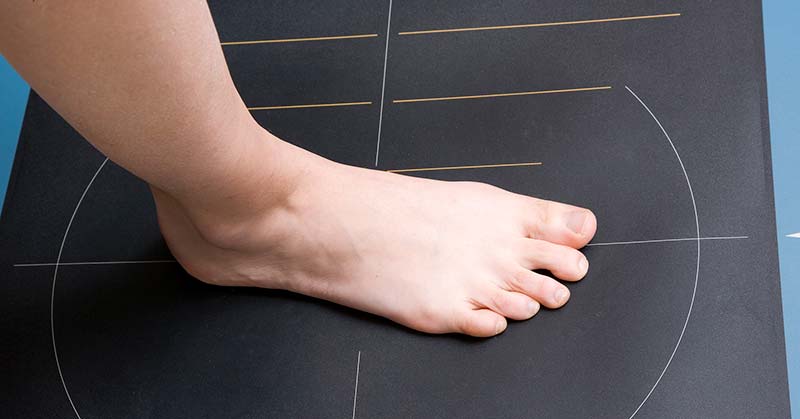
In the last two years, there has been a growing shift in sports technology from measuring general body motion to measuring foot action. With a quarter of the bones located below the ankle, the foot complex is a very difficult joint system to evaluate and an even harder system to manage. In the next five years, pressure mapping is going to explode, with several companies all fighting over the data to monetize the capture and analysis of athlete gait. Of all the buyer’s guides from SimpliFaster, this is the most demanding subject area yet, and perhaps the most important part of helping athletic performance.
What Is Pressure Mapping in Sport?
Pressure mapping sometimes gets confused with force analysis, as the data is similar and the charting of a jump may look nearly identical. The main difference between force plates and pressure is that the former is direct objective kinetic measurement and the latter is more descriptive of the application of ground reaction forces. If you want to know how much force is interacting through the ground in jumping or other sport action, plates are appropriate; if you want to know how the foot applies forces for anatomical reasons, pressure mats and in-shoe systems are appropriate. The most-common reason pressure mapping isn’t a well-known area in sports is because the technology is extremely difficult to consumerize, as both the sports and medicine industries are extremely demanding and companies tend to allocate resources to research and industrial markets instead of coaches and sports medicine professionals.
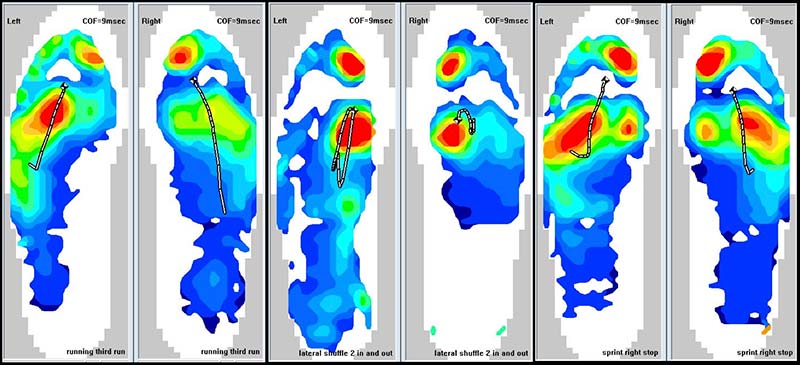
Two primary options exist for pressure mapping equipment: a mat for barefoot analysis and insole technology designed to measure inside a shoe. One system alone doesn’t tell the full story of what is going on, as both barefoot and in-shoe analysis are needed to see how footwear interacts with the foot strike of the athlete. The understanding of pathomechanics and clinical examination of the lower extremity are far more important than the brand of technology selected.
Mat Analysis Benefits and Limitations
Mats are still relevant today, as wearable devices are only appropriate in-shoe and barefoot evaluation needs a mat. Barefoot is a pure evaluation and, due to the fact it’s “naked,” it’s nearly impossible to apply systems that can capture detailed motions of the foot. It’s not easy to measure plantar pressures of the sole of the foot without a pad or mat. Mats—specifically walkway products—give orientation information on the foot strike, such as how the foot lands in time and space. Most in-shoe products just capture the data in a vacuum, but newer products are adding sensors to help assist with orientation perspective.
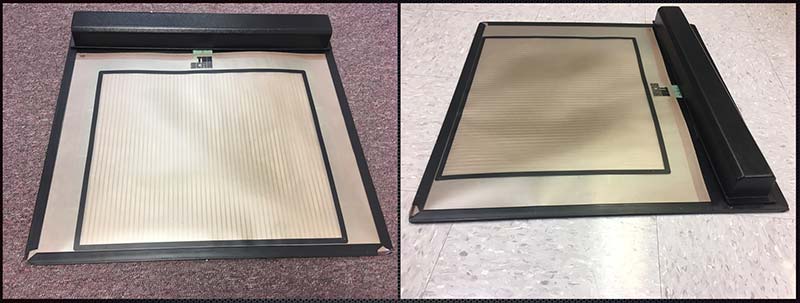
Professionals can use mats for unshod foot strike, but you miss a lot of valuable data when footwear is added to the mix. Unfortunately, it’s not a complete solution if you don’t evaluate the addition of cleats or athletic footwear because some mechanical changes occur when the foot is shod. In order to improve shoe design, the interaction of the foot, shoe, and ground must be combined.
In-Shoe Benefits and Limitations
It is very difficult to use an insole sensor system because most of the technology requires a compromise somewhere in the system, usually with the sensor density, sampling speed, or size of the hardware. As of July 2017, no company has an in-shoe product with hardware that leads in all categories; the bulky products usually have superior sensor data but they also have cumbersome harnesses to relay data to a laptop or desktop. The more mobile the product, the more likely it captures less information, but the data is more natural. For example, some systems that have wired connections will create a gait disturbance, thus interfering with the quality of the data even if the sensors are more accurate and precise.

Overall, in-shoe systems compromise the data width and depth in order to provide mobility. Many of the products in the wireless pressure insole market fail to live up to the research-grade quality needed to actually do something productive with the data, but their smaller price points lure coaches and sports medicine professionals into buying them. This will change in the next few years as the market is large enough for innovation, but it will take another year after that to validate the claims of the new systems.
What Are the Key Measurements of Pressure Mapping?
Five metrics that are pragmatic and actionable exist with pressure mapping, as some measurements can’t be changed because they are anatomical and not responsive to interventions. The problem unique to pressure mapping analysis is that the data is multidisciplinary and requires a very collaborative and integrated staff to fully solve the problems encountered.
Without clinical evaluation, pressure mapping is just guesswork. Share on XHere are the five primary and unique measurements of both in-shoe and mat-based systems. More metrics exist that are useful, but for the most part the five below are common and universal to all systems.
Gait Curves: The most common and familiar metric with step analysis is the force-time gait curve we see with force plates and pressure mapping. Walking and running have typical norms, and the staff’s responsibility is to identify negative changes and possible dysfunctions from asymmetry due to injury. Baseline testing is still uncommon, so most teams are still evaluating late in the injury process, usually after repeated problems or re-injury.
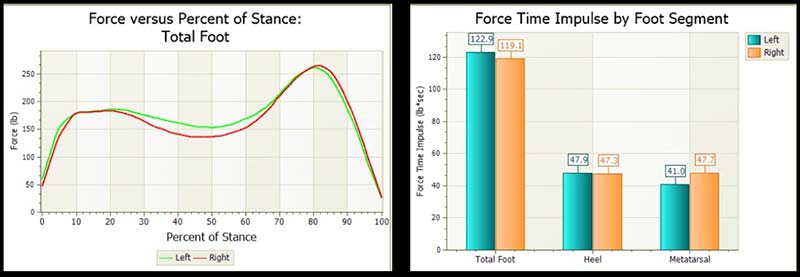
Center of Pressure: The center of pressure, or CoP, is a specific measurement in both in-shoe and mat systems. CoP measures the calculated trajectory of the entire foot strike based on the surface area and pressures of the step. Not only do systems look at the trajectory and path of the center of pressure, but they also look at the speed within the beginning and end of the foot strike. Interpreting CoP is difficult without a lot of expertise, because each foot must be evaluated structurally and functionally. A fast and uncontrolled CoP is just as dangerous as slow regions that have mobility impairments, such as turf toe and other joint restrictions.
Symmetry Profiles: The measurement of symmetry is common because a change in mirrored balance usually indicates a risk of injury from acute dysfunction. There is normal and sometimes necessary asymmetry in sport, but interpretation of the changes or current functional outcomes is up to trained professionals. Right and left symmetry serves as a baseline to situations when pre-injury values have not been obtained.
Topography Mapping: The simple animation of pressures, usually shown with either 3-D values or color schemes, is the raw presentation of each step. The visualization is like an MRI, as an expert must view the data to fully exploit the benefits, but the value of this data plot is that laypeople can identify obvious problems, thus connecting the process to all parties.
Regional Evaluation: A less-common mapping process that varies in both application and accuracy is the segmental analysis of pressure profiles. Segmental analysis is estimating the joint action or foot mechanics through calculations and time periods. Many of the companies in the market try to prescribe orthotics by using this process, and the outcomes have been, on average, very poor. Without clinical evaluation, pressure mapping is just guesswork, because some changes could exacerbate patterns, but sometimes the appliances may work. Advanced modeling is where things are going in sports podiatry, and we see some elite teams leveraging it, but some high-profile teams are missing the boat entirely.
System Software and Third-Party Integration
The market of pressure-mapping hardware usually has software that is functional, but nothing spectacular for the most part exists from companies. The strongest software option is from Tekscan, as they have a strong history of refining the product. Some programs are designed to skip analysis and go right into orthotic fabrication and, for the most part, they provide little value beyond small tweaks to plaster casting or laser molding.
Due to the need for multiple data types to synchronize capture events, many of the products have recording triggers and plug-ins to ensure video, EMG, force plates, 3-D motion, and other information sets. The only drawback to pressure mapping is the lack of format-agnostic analysis tools that can important any file type to do a deep review of the mat or in-shoe data. Currently, some products can merge raw data to run some analysis, but nothing on the market now impresses the international experts.
Many of the companies have partnered with manufacturers of over-the-counter orthotics or customized products, but as we mentioned earlier, without clinical evaluation the process is severely flawed and prone to error.
Education and Application Resources
Educational services, such as manuals and user groups, are the most limited area in pressure mapping. Some companies do webinars or provide a few white papers, but hardly any of them are known as thought leaders. A common approach is to have a noted authority conduct a one-day workshop for customers, but due to the travel demands, they are difficult to attend and are too general to appease the wide range of professionals in need of education.
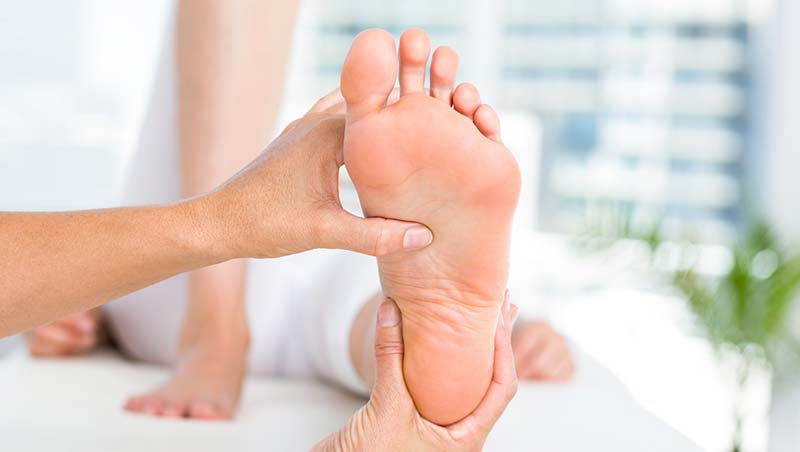
Research with pressure mapping is also very limited for several reasons. First is the lack of foot evaluation for each subject, as foot type is not a static measure, but a comprehensive profiling of the structural anatomy, current joint mobility, and lower extremity function, as well as evaluation of the shoes. Analogous to blood transfusions, many interventions fail not because of intent, but because each foot is unique enough to require specific, rather than blanket, interventions.
It is very probable that as the adoption pattern increases, the market will increase the ecosystem of added-value consultants and educational partners. Regardless of the current drought of experts, before investing in the hardware, education should be the first priority.
Interventions and Staff Responsibilities
Typically, there are three common tiers of expertise: performance staff, sports medicine, and sports podiatry. Roles and responsibilities must be aligned for pressure mapping to succeed, otherwise success will be impossible. The unique challenge to pressure mapping is that the data is useful to many members of a sporting organization, but managing the information and what it can provide is difficult. For example, a specific cleat may have problems that require shoe modification by the equipment manager, but he or she may not know how to determine which athlete needs specialized changes. Orthotics is another example, and the NBA has many vendors providing appliances without a shred of evidence that the intervention does anything but add a modeled carbon fiber insole.
Image 6: Custom orthotics are the primary intervention now, but as 3-D printing increases, athletic footwear will become more customized. Performing analysis on the footwear, as well as pressure mapping the foot, is the future.
Shoe design is another area that is, shockingly, left without many checks and balances to claims or accountability. Like the common toothbrush, the marketing language is often infectious, vague, and built on pseudo-science. The shoe design industry is more art than biological function, and this is because most customer base their buying patterns on aesthetics and not individualized function and personalization. Buzzwords like “pronation control,” “stability,” “high-tech cushioning materials,” and now “barefoot simulation” are polluting the sports world. While this topic is beyond the scope of this review guide, the role of pressure mapping is to ensure what is applied to the athlete is indeed working.
The Top Systems on the Market
Based on market saturation and adoption rate, most of the products listed are used in research and clinical settings. Some companies provide both an in-shoe product and mat device, but others just specialize in one or the other. It is important to remember that, for a comprehensive evaluation of complex problems, it’s wise to use both in-shoe and mat systems to tease out more information. However, one measurement can provide a lot of insight. Here are the top products on the market.
Tekscan F-Scan and MatScan: This Boston-based company has an array of medical and dental products that use their film-based pressure system, and the F-Scan (in-shoe) is going through a redesign process. The MatScan provides two primary options, a single step solution and a walkway product. Tekscan is a leader in both the education side of the space and with their software, but they’re limited by hardware that is outdated and bulky.
Tekscan should be used for walking and some treadmill evaluation, and ESPN’s “Sport Science” featured it in the past. The sampling frequency and resolution is ideal for sports podiatry and is the most clinically powerful of all the systems. Walking analysis and linear locomotion is the backbone to clinical evaluation because injured athletes are unlikely to perform movements that are more sport-specific. A lot of information can be found with walking analysis and from slower velocity running that can be sufficient to making progress with return-to-play decision-making.
Moticon: Moticon is the Porsche of pressure mapping, as their insoles are completely wireless and don’t require any transmission equipment outside the shoe. With nothing but a pure insole, Moticon is the future. The limitations of the product are the sensor density and sampling frequency, as well as the software. What this means is that events inside the shoe are going to have low resolution but are still strong enough to get gait curves and athletic motions that you can never get with mats or the like.
The future will be flooded with products like Moticon because they are the only tool that can monitor training. While the Munich company only recently entered the market, they have been working in sport for nearly a decade and understand the demands coaches and sports medicine require. Moticon is a strong solution for those wanting solid data with an emphasis on simplicity and mobility.
RSscan: The Belgian company made a tremendous comeback with its new footscan product and partnership with Materialise, but they are entering risky waters with their orthotic fabrication algorithms. The hardware is a mat or multi-step walkway, and it includes software that is elegant but limited. Seven years ago, the website looked like the company was barely solvent, but now they are making a lot of strategic and logical business development moves.
The company is more known in Europe, but has made a few connections in the U.S. market and is working indirectly with an NFL team in the Northeast without much fanfare. The company has a foot scanning device called the Tiger 3D scanner, and it’s a brilliant option to model the structural shape of the foot. However, it doesn’t have medical imaging, so it’s more for comfort and fit than for function. Using the 3-D scanner with pressure mapping is the future of performance and rehabilitation.
Medicapteurs: This French company has a small niche with its two products, the WIN-TRACK and WIN-POD systems. WIN-TRACK is appropriate for comparison because it uses dynamic pressure mapping versus a more static evaluation like the WIN-POD option. Like the MatScan, the S-Plate is a single-step option and is promoted to help with diagnosis of the lower extremity. The company is more clinical and it’s international, with distributors worldwide. The software is current but is not notable compared to Tekscan. Perhaps the most noted element is that the design of the product is aesthetically pleasing and intelligently crafted, with each system functioning well and providing solid data.
Novel Pedar: This German company is well-known in the research world, and they provide a more permanent product than Tekscan. Instead of disposable films that last only for a handful of uses, the product is reusable. Studies for soccer widely use Novel’s pedar-xf product for obvious reasons, as they collaborate with leading cleat manufacturers for product development. Pedar, like Tekscan, uses a very dated but necessary transmission harness, as the data requires a lot of bandwidth. The excessive wires and cumbersome “data fanny pack” make it impossible for real-world monitoring. Pedar’s software is on par with most on the market, but is a clear step (no pun intended) behind Tekscan. The technology requires recalibration and maintenance, but due to the fact none of the sensors are disposable, many researchers like the system.
The Orthotic Group (TOG) GaitScan: The Orthotic Group’s system, called GaitScan, is a smaller player but still relevant. The Canadian company’s strength is understanding business models and reporting, along with the ability to monetize orthotic prescription. The product’s core weakness is that its automation removes a lot of clinical evaluation necessary to give athletes the best option, since a barefoot walking step is not enough to do much outside of very general orthotic prescription. Many orthotics are prescribed without enough thought and analysis, leading to a worsening of the condition or at least failing to do anything measureable. Some systems like the GaitScan can help many patients with shoe comfort, but for athletic needs, the system isn’t appropriate. Still, comfort is hard to measure as it’s very subjective.
Roughly a dozen more companies and products could be listed, but many of them are out of business, struggle to gain market traction, fail to provide accurate data, or are just concept projects looking for venture capital. Unless the products provide enough impact for research and professional use, including them on a longer list is not fair to the reader. Expect the list to grow dramatically in the next few years, however, with products like Moticon becoming available.
The Future of Pressure Mapping and Market Speculation
Pressure mapping technology is a revolution for the right professionals, but inappropriate for casual users and that does include most coaches who lack the clinical ability to evaluate foot function. Like any tool, the purpose of the insole measures or mat system is highly dependent on the skills of the user. Professionals should have a working idea of what they want to do with the data, and pressure mapping systems and analysis software isn’t for everyone. The investment in the technology requires time, expertise, and experience solving problems mentioned earlier. Pressure mapping removes much of the burden and time with the indirect forces it measures, and sport performance and sports medicine finally have the right information for better results.
Pressure mapping removes much of the burden and time with the indirect forces it measures. Share on XWe have seen roughly 20 systems firsthand in the last five years, and the evolution of this market is ironically moving at glacier speed, even though it’s a technology. The future will feature more insole type products and third-party analysis software to connect the data to 3-D printing tools. While the prices will likely be lower entry points, the overall cost of solving foot function areas will grow, due to the entire ecosystem expanding. Pressure mapping technology is ripe for Cambrian explosion in the sports world, so continue to look at the space over the next few years as it’s going to be a standardized part of sport performance and rehabilitation.
Since you’re here…
…we have a small favor to ask. More people are reading SimpliFaster than ever, and each week we bring you compelling content from coaches, sport scientists, and physiotherapists who are devoted to building better athletes. Please take a moment to share the articles on social media, engage the authors with questions and comments below, and link to articles when appropriate if you have a blog or participate on forums of related topics. — SF

Great article. good breakdown of each companies offers! very helpful.
I’d love to see a follow up articles on this technology developments and how it is integrated into practice.
Thank you for the article very interesting.
My employers are looking at obtaining a pressure measurement device to help treat and manage Diabetic foot ulceration. I note most articles relating to pressure measurement devices seem to focus on the athlete either low key joggers or serious runners but very little really seems to have been tested or written about simple pressure measurement products to enable insole manufacture and alteration to reduce external forces to aid diabetic foot ulcer healing and or prevention of future tissue breakdown.
As a Diabetic High risk foot Podiatrist off loading diabetic foot ulcers is my mainstay work and a huge challenge. The cost of treating and managing the diabetic ulcerated foot runs into 100`s of millions of dollars.
Hello Mr. Percival. I saw your reply on the Simplifaster web page and wondered if you could help me. My feet are insensate due to neuropathy from a long undiagnosed B12 deficiency. I have struggled for years with plantar ulcers. I have tried custom orthotics, AFOs, custom shoes, but I still re-injure my feet, sometimes with drastic consequences ending with amputation. Could you suggest a device that would monitor my feet for pressure/heat and warn me when I am in danger of developing a wound? I will continue working with my Hangar orthotist to find a better orthotic, but I need some technology to replace the nerves in my feet that no longer sense pain.
Thank you for your time.
Bruce Estes
H. 607-539-3295
Hi Bruce
Check Orpix products : https://www.orpyx.com/
Laurent
Great article. good breakdown of each companies offers! very helpful.
The main focus and need for these devices are in the medical, where limb and life can be changed and saved by off-loading the high risk foot, not just for those with diabetes, but as per the DFA ad IWGDF.
👏